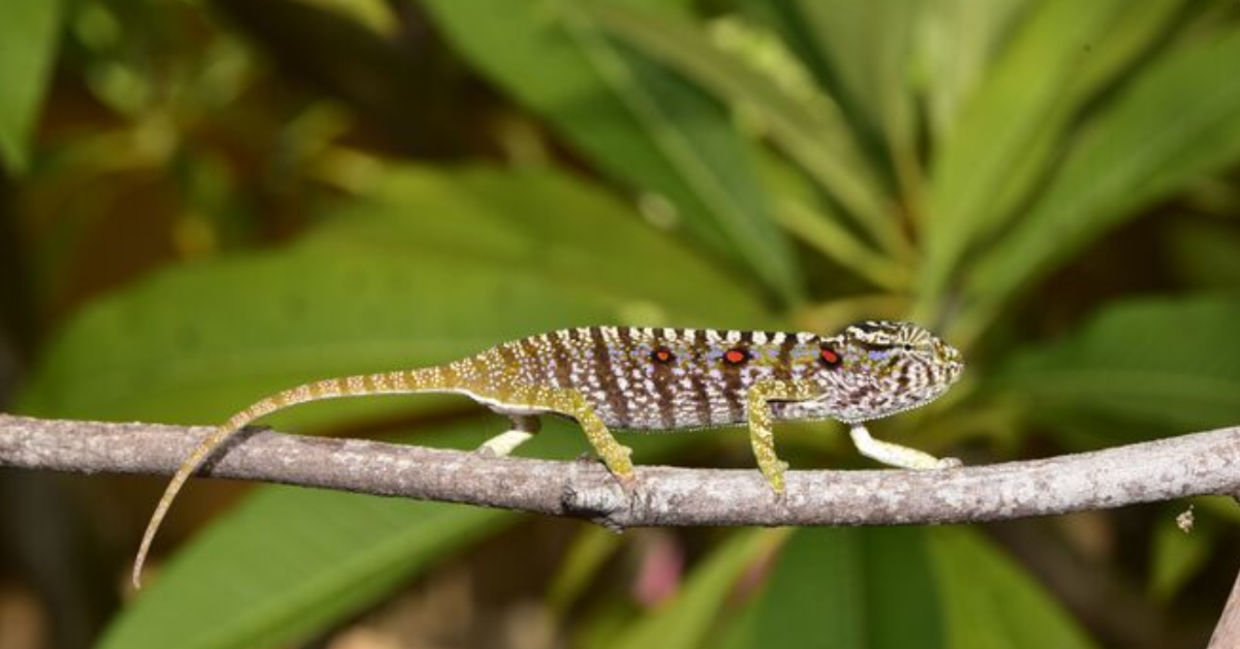
(Global Wildlife Conservation / Frank Glaw)
Scientists recently rediscovered the elusive Voeltzkow’s chameleon during a two-week expedition to Northwestern Madagascar. The last one was seen in 1913, over 100 years ago.
The chameleon is the sixth of Global Wildlife Conservation’s (GWC) top 25 most wanted lost species according to the organization. Although the expedition that sighted the rare species took place a year-and-a-half ago on the Indian Ocean island country, the study was just published in the scientific journal Salamandra.
The expedition was led by a team of scientists from the Bavarian State Collection of Zoology (ZSM), chameleon asset management ltd, the Swiss sponsor, represented by Carlos Zanotelli, and the University of Antananarivo in Madagascar according to The Guardian.
Over 96 chameleon species live on the island country and many of them do not live anywhere else in the world. While all were found more than 100 years ago, some like the Voeltzkow’s chameleon, named after Alfred Voeltzkow who discovered the species, had not been seen since.
FOUND: The Voeltzkow’s Chameleon had been lost to science since 1913...but no longer! An expedition team rediscovered the colorful species during an expedition in Madagascar. This is the 6th of our most wanted lost species found! https://t.co/7ZK2AGV6aY (Video: Frank Glaw) pic.twitter.com/wYqwN5UlX4
— Global Wildlife Conservation (@Global_Wildlife) October 30, 2020
“I thought we might have a good chance of rediscovering Voeltzkow’s chameleon, but I was surprised that it took so long and that it was so difficult,” Frank Glaw, head of the Department of Vertebrates at the Zoologische Staatssammlung München, and the leader the expedition said in a GWC press release.
The beginning of the expedition was not successful but on the last few days, the scientific team hit paydirt and found three males and 15 females. Glaw said that they found a healthy population of the very short-lived chameleons. What struck them was the brilliant colors – purples, oranges, red, green, and black – of the females.
The research showed that the Voeltzkow’s chameleon is definitely a separate species from its closest cousin the Labord’s chameleon. There are morphological and color differences. But both only live for a short time during the rainy season. “These animals are basically the mayflies among vertebrae,” Frank Glaw, the curator of reptiles and amphibians at the ZSM told The Guardian.
Unfortunately, the Voeltzkow’s chameleons’ habitat in Madagascar is under threat from deforestation and cattle grazing. While some of the habitat is in nature preserves, more conservation efforts are needed according to GWC.
“The Voeltzkow’s chameleon is a powerful flagship species for conservation in the region,” Zanotelli, said in the press release. “It is imperative that we protect nature and treat natural habitats as if we would like to live there. Only in this way can we ensure the future of the incredible species, like the Voeltzkow’s chameleon, we share this planet with.”
YOU MIGHT ALSO LIKE:
An Extinct Rare Giant Tortoise was Found on the Galápagos Island
Nepal's Wild Tigers Are Roaring Back From Near Extinction







